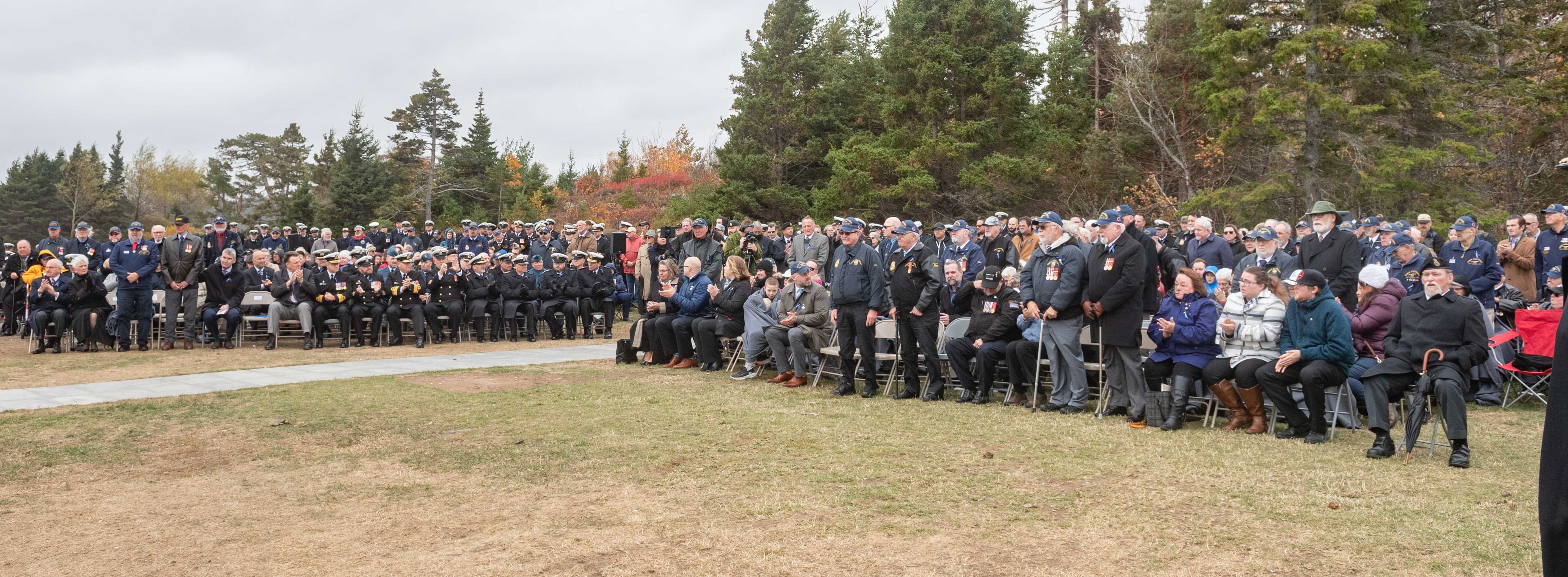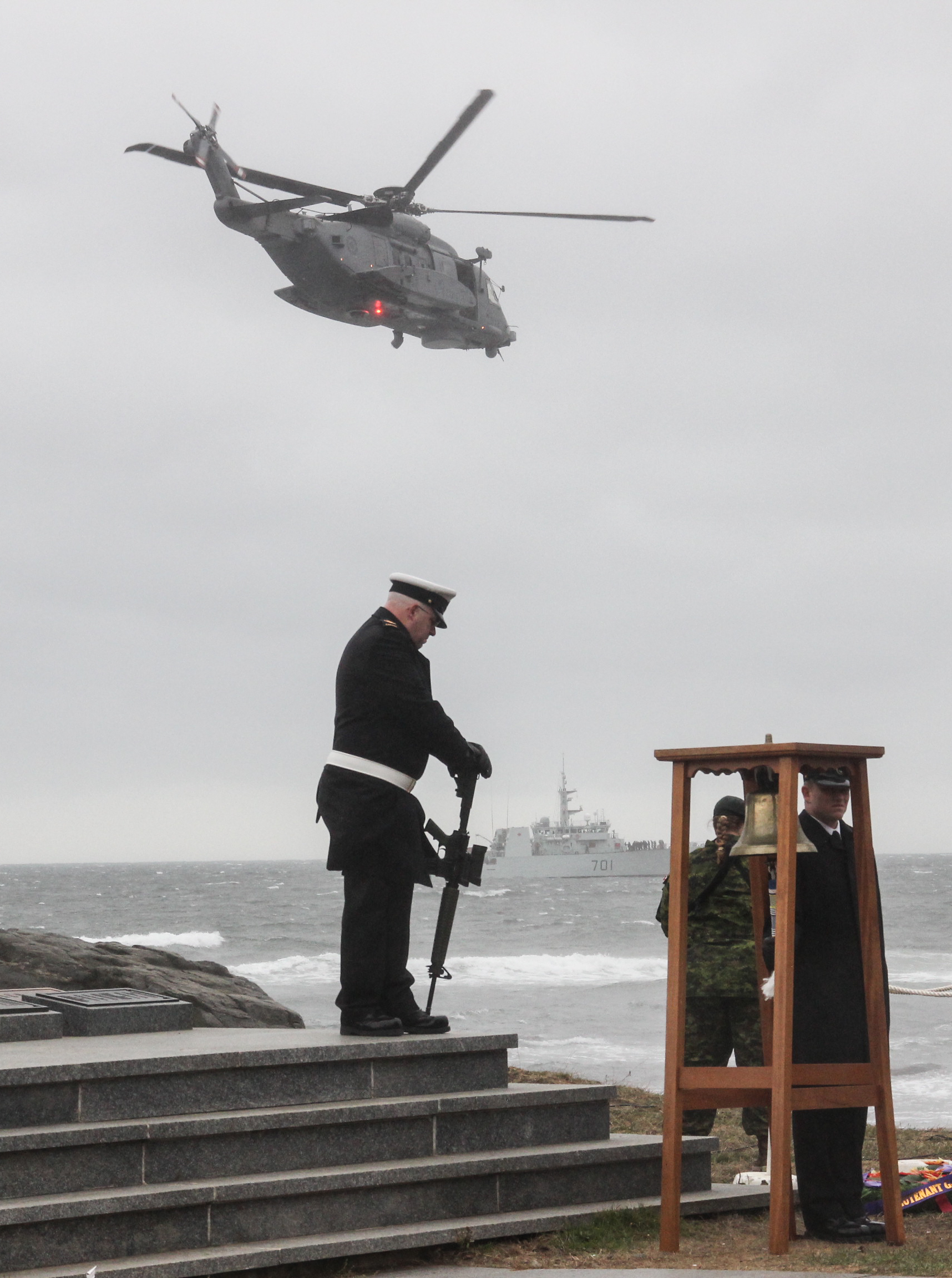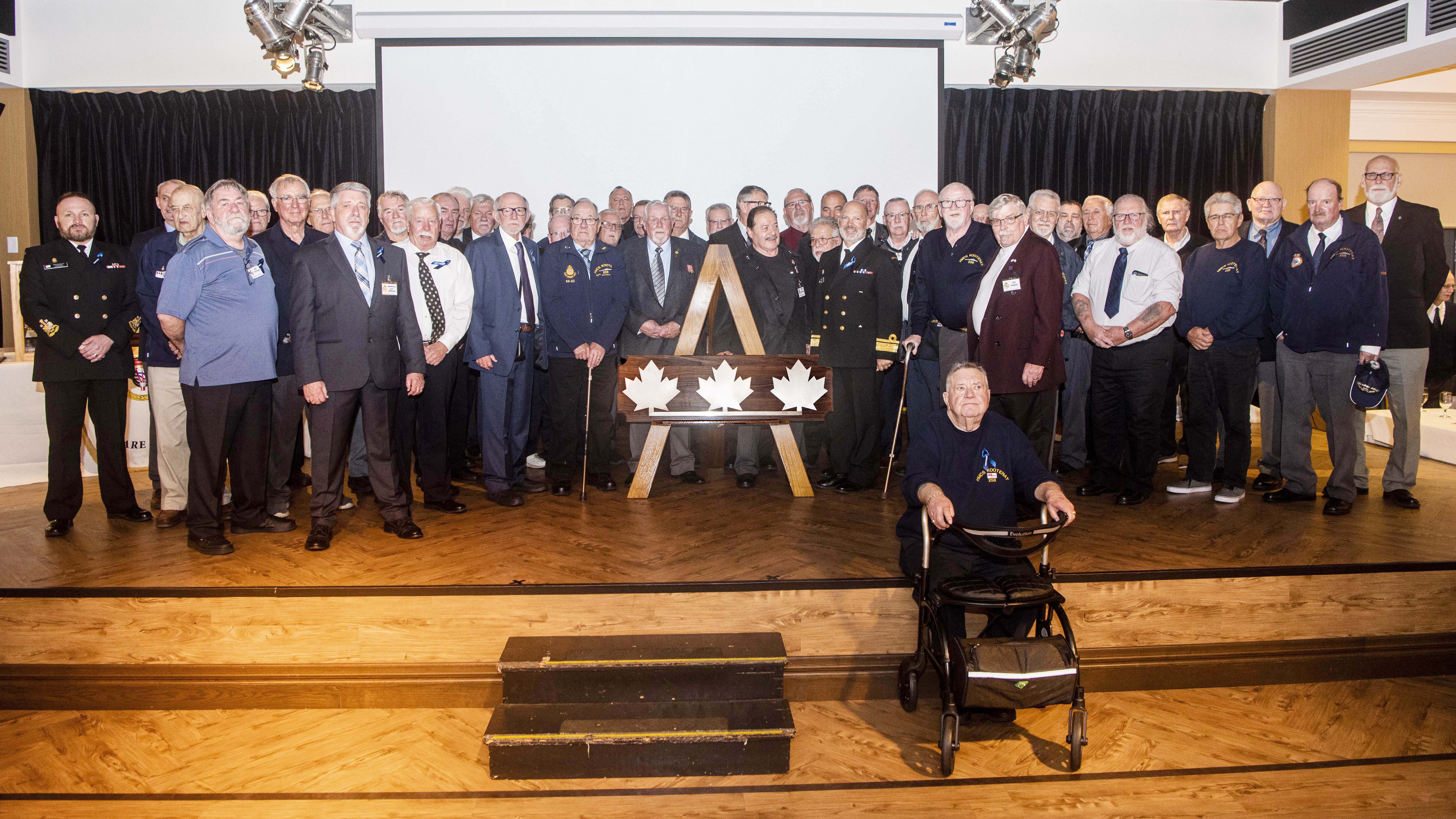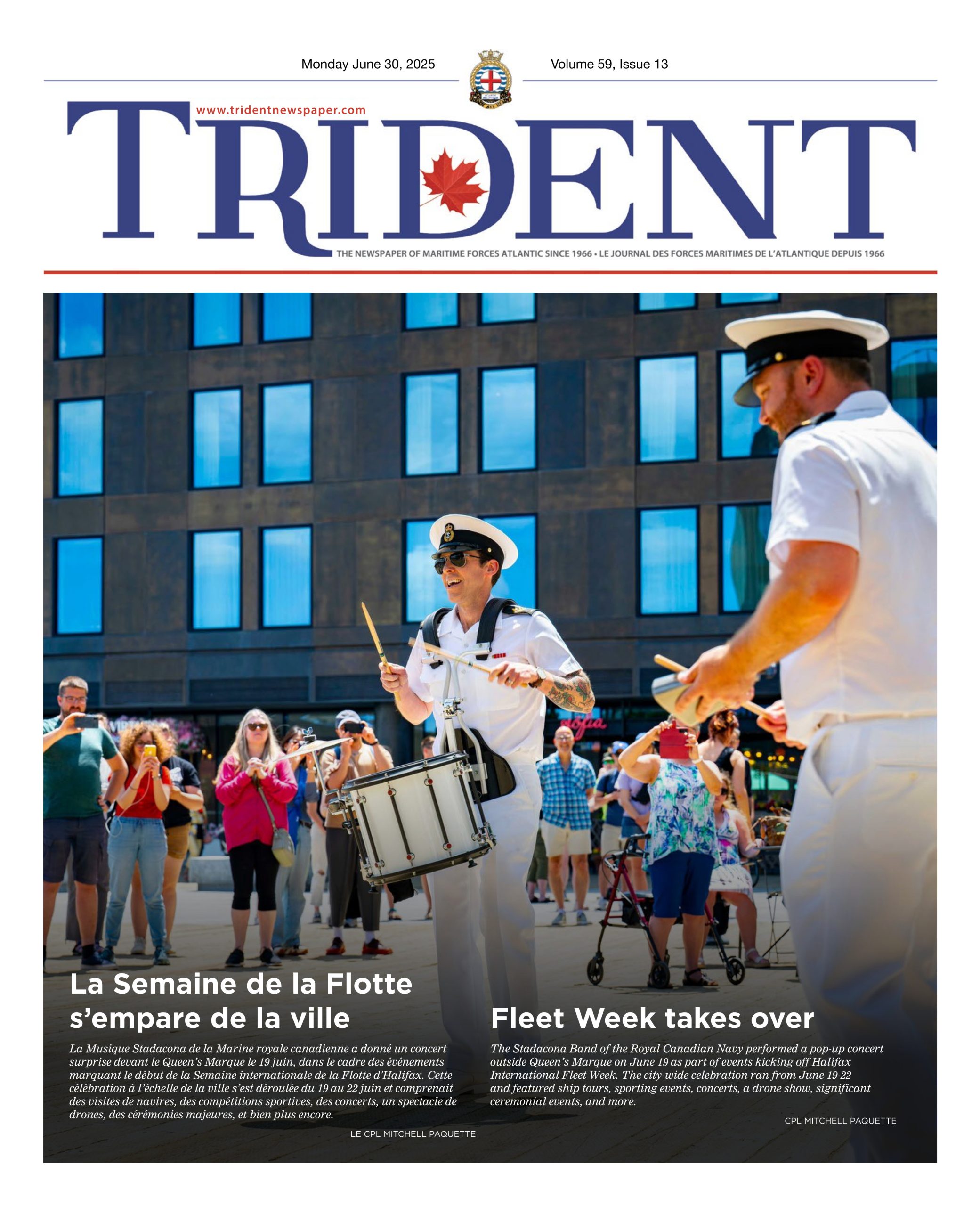
PTE SARINA MCNEILL, FIS HALIFAX
HMCS Kootenay survivors mark 50 years since RCN’s deadliest peacetime incident
By Ryan Melanson,
Trident Staff

RYAN MELANSON, TRIDENT STAFF
The explosion that took place in HMCS Kootenay on October 23, 1969, killed nine sailors and injured 53 more, who suffered from burns and inhalation of toxic smoke. As Steve Rowland explains, however, the damage caused on that tragic day went far beyond physical injuries.
“Make no mistake, not one person got off that ship unscathed. Fifty years later, we all carry scars, either physical, emotional, or psychological, related to what happened,” said Rowland, who was a young sailor in just his second year of service in 1969.
The survivors didn’t shy away from those difficulties as they gathered on October 23 at Point Pleasant Park to mark the 50th anniversary of the explosion, which remains the Royal Canadian Navy’s deadliest incident at sea during peacetime. The ceremony drew a large crowd, with politicians and dignitaries, including The Honourable Arthur J. LeBlanc, Lieutenant Governor of Nova Scotia, Halifax Mayor Mike Savage, and local MPs, joining survivors, families, and members of the CAF and RCN community for the occasion. All wore the new HMCS Kootenay ribbon, which has now been approved for RCN members and others to wear from the start of October until midnight on the 23rd.
The explosion took place about 200 miles off the southwest coast of England – Kootenay was ordered to break off from its nine-ship task group to conduct routine full power trials. The trouble came from an improperly installed bearing casing in the ship’s starboard gearbox, which allowed oil to overheat to the point it caught fire, causing the devastating explosion. The 10 sailors in the engine room suffered the worst, and struggled to scramble up a melting aluminum ladder as the room filled with flames. The two remaining survivors from the engine room, Allan “Dinger” Bell and Al Kennedy, were both in attendance and specially recognized during the event. Both were also awarded long overdue wound stripes earlier this year in recognition of their sacrifice and bravery on that day.
John Montague, who was a junior officer on board Kootenay, spoke at the ceremony, touching on the actions of the crew in the immediate aftermath, as sailors fought to save their colleagues and their ship through black smoke, with limited equipment, and with the vessel steaming uncontrollably at full power through the North Atlantic.
“There were many acts of extreme bravery that day, and outstanding manifestations of courage by everyone involved. Many sailors acted valiantly and volunteered for dangerous tasks they had never done before in an effort to save the ship and help their fellow sailors,” he said. He also recalled the well-known quote from Kootenay CO Cdr Neil Norton, who said at the time that “a less professional crew could easily have finished the day in liferafts.”

MONA GHIZ, MARLANT PA
“The aftermath, however, was as bad as the incident itself,” Montague added, as crews got the fire under control and learned that several colleagues had perished. Four were buried in England, four were buried at sea, and only one in Halifax, because of repatriation policies at the time.
“On the homefront in Halifax, there were eight women who suddenly became widows, and 18 children who no longer had a father,” he said.
“And back in 1969, we had never heard of post-traumatic stress disorder.”
He said the annual gatherings for Kootenay survivors, which began 20 years ago, have helped many of them cope with the difficult memories and mental health issues stemming from the incident, and many have begun receiving professional help as well, which has helped pave the way toward closure.
Members of the crew also find comfort in the lessons learned from Kootenay, which led to major changes in the way navies prepare for and combat fires and other incidents on ships. New types of equipment, procedures, and training initiatives have a direct link back to the tragedy in 1969.
“We consider these positive changes to be Kootenay’s legacy, and that’s something we are very proud of,” Montague said.
The day also served as a chance to rededicate the Bonaventure Anchor Memorial, which serves as a monument to all men and women who died serving the RCN during peacetime. The day saw 46 new names added to the plaques around the memorial. This addition, along with refurbishment work completed on the anchor in 2018, has long been sought by members of the Kootenay crew and family members of other deceased sailors.
During the reception at Tribute Tower following the ceremony, Commander Royal Canadian Navy Unit Commendation was presented to HMCS Kootenay. The citation reads as follows:
“On 23 October, 1969, Her Majesty’s Canadian Ship Kootenay was off Plymouth, United Kingdom, when, at 0821, an explosion in the engine room set fire to the ship and filled it with toxic smoke. Several of the crew would perish and many more would be wounded. However, the courage and professionalism of the crew prevented a far worse result. They responded quickly and without panic, saving both lives and the ship, which would see a further 26 years of distinguished service. This event directly contributed to positive change in the Navy and our ships, leading to safety improvements and a greater commitment to the dignity of our sailors and respect for our honoured dead. The inaugural Commander Royal Canadian Navy Unit Commendation is thus presented to HMCS Kootenay and held by Damage Control Training Facility Kootenay, which continues the proud legacy of that crew. Their actions in the face of the Navy’s worst peacetime disaster brought tremendous credit to their namesake unit and the Royal Canadian Navy.”





